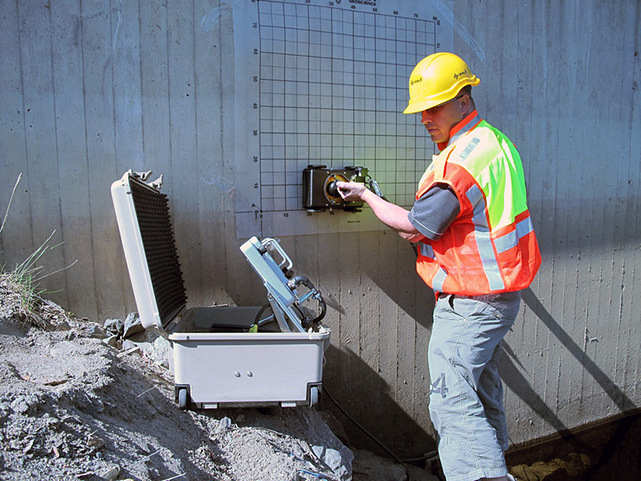Explore RainierGPR Service Areas for Specialist Concrete Scanning
Explore RainierGPR Service Areas for Specialist Concrete Scanning
Blog Article
Concrete Scanning: An Essential Step Towards Ensuring Architectural Stability and Safety
In the world of building and construction and framework maintenance, the value of concrete scanning can not be overstated. By using sophisticated technology and techniques, concrete scanning serves as an essential tool in making sure that the honesty and safety and security of bridges and buildings are promoted to the highest requirements.
Relevance of Concrete Scanning
Concrete scanning plays an important role in guaranteeing the architectural integrity and security of buildings and framework projects. By utilizing sophisticated technologies such as ground-penetrating radar (GPR) and electro-magnetic induction, experts can non-destructively evaluate concrete frameworks to discover potential problems, spaces, ingrained things, and reinforcement design. This process enables early detection of anomalies that might jeopardize the security of a framework, stopping expensive problems and making certain the security of residents.
Prior to boring, reducing, or coring right into concrete, scanning assists identify the exact areas of rebar, post-tension wires, and various other embedded components, decreasing the risk of unintentional hits that might lead to structural weak points. Furthermore, concrete scanning help in high quality control by verifying the density of concrete covers and discovering any discrepancies that might affect the total resilience of the structure.
Modern Technology for Concrete Evaluation

Advantages of Early Detection
Timely detection of structural issues can considerably alleviate threats and make certain the long life of building and construction tasks. By identifying prospective problems at an early stage in the construction process, stakeholders can take proactive actions to address issues prior to they rise right into bigger and more costly problems. One of the essential advantages of early discovery is the avoidance of architectural failings, which can posture significant security risks and cause task delays and financial losses.
Moreover, very early detection permits timely repairs and upkeep, which can assist extend the life-span of the framework. By dealing with issues without delay, building teams can avoid pricey repair services or perhaps the need for early substitute of structural parts. This positive approach not just conserves money and time yet also boosts the general safety and toughness of the building job.
Additionally, very early discovery can improve job planning and decision-making by supplying stakeholders with beneficial understandings into the condition of the framework. Armed with this info, project supervisors can make informed options pertaining to building timelines, products, and methods, leading to extra effective and effective job outcomes.
Making Certain Structural Stability
Making sure the architectural stability of a construction project is critical to its security and long life. Architectural stability refers to the capability of a structure or framework to maintain its type and feature under numerous lots and ecological conditions. To attain this, thorough assessment and tracking of the framework are crucial. Concrete scanning plays an essential role in guaranteeing architectural security by identifying potential concerns such as spaces, delamination, or support deterioration that can endanger the honesty of the framework with time.
By using advanced scanning innovations like ground-penetrating radar (GPR) and electromagnetic induction, construction her latest blog specialists can non-invasively check concrete structures to identify locations of worry below the surface area. This positive technique enables the very early discovery of problems or weak points, making it possible for timely repair work or support to avoid architectural failures.
Normal concrete scanning during various building phases and throughout the life process of a framework can help preserve its stability, minimize threats, and make sure the safety of owners. By prioritizing structural security through concrete scanning, building projects can improve their resilience and longevity, eventually contributing to higher safety and security and durability.
Avoiding Essential Failures
To guard against devastating events, careful monitoring and positive upkeep are vital in avoiding vital failings within structural frameworks. Finding possible problems prior to they escalate is essential to avoiding architectural failures. Applying routine evaluations, such as concrete scanning, can disclose covert problems like spaces, splits, or rust that could jeopardize the integrity of a structure. By utilizing innovative scanning technologies like Ground Penetrating Radar (GPR) or Concrete X-ray, designers can non-destructively analyze the problem of concrete and recognize weak factors that call for support or fixing - RainierGPR Service Areas.

Conclusion
Finally, concrete scanning plays a crucial function in ensuring architectural honesty and security by using advanced technology for early detection of possible problems. This proactive approach helps avoid crucial failures and makes certain the security of structures. It is important to focus on concrete examination as a common method to Read More Here protect the longevity and safety of structures and facilities.
Concrete scanning plays an essential duty in making sure the architectural honesty and security of structures and facilities tasks. Furthermore, concrete scanning help in high quality control by verifying the density of concrete covers and spotting any kind of inconsistencies that may influence the general durability of the framework. Concrete scanning plays an essential duty in ensuring architectural security by discovering potential concerns such as voids, delamination, or support corrosion that might compromise the stability of the framework over time.

In conclusion, concrete scanning plays a critical duty in making certain architectural stability and safety by using innovative innovation for early discovery of prospective issues.
Report this page